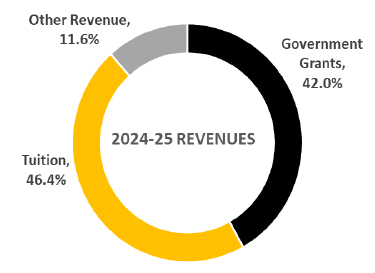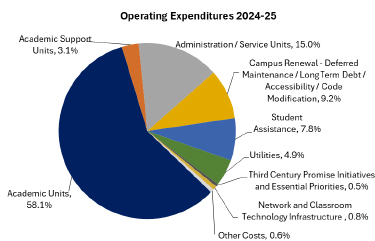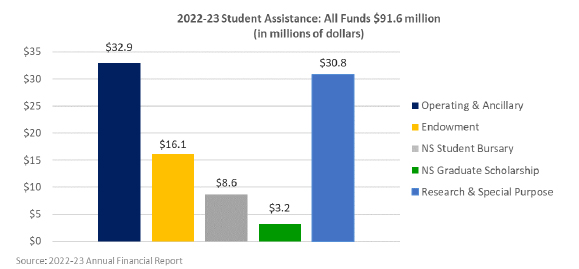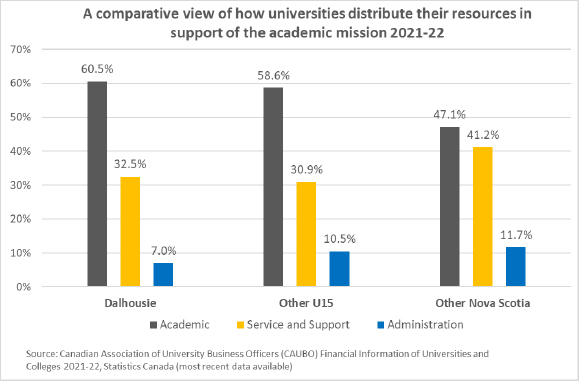Dalhousie Budget Planning
Up-to-date information about university operating budget planning
Latest news
April 10, 2024
At its meeting on March 26, the Dalhousie Board of Governors approved the Dalhousie Operating Budget for 2024-25.
Dal's operating budget at a glance
The operating budget funds the day-to-day operations of the university, accounting for the majority (70%) of the university’s financial activity. The draft operating budget plan for this upcoming fiscal year (2024-25) balances revenues and expenditures at $552.7 million.
Where the money comes from
- Nearly 90% of the budget's operating revenue comes from two sources:
- Tuition fees, set by the university's Board of Governors: 46.4%
- Provincial operating grant, set by the provincial government: 42%
- The remaining 11.6% comes from other various smaller sources, most notably endowment revenue.

Source: 2024-25 Operating Budget
Where the money goes
- The majority of the operating budget (nearly 60%) is allocated to Dalhousie's academic units, while an additional 15% goes to administration/support units. This allows Faculties and units to deliver on priorities in support of the university's mission and to carry out their day-to-day work.

Source: 2024-25 Operating Budget
- The vast majority of Faculty and unit spending is on compensation for faculty and staff (salaries, benefits and pension payments). Faculty and staff compensation makes up 73.2% of overall university operating expenses.
- Dalhousie allocates resources similar to its U15 comparators (Canada’s group of leading research‐intensive universities). Dalhousie spends 60.5% of its operating budget in academic areas (Faculties, including Graduate Studies and Continuing Education), compared to the U15 average of 58.6%.


